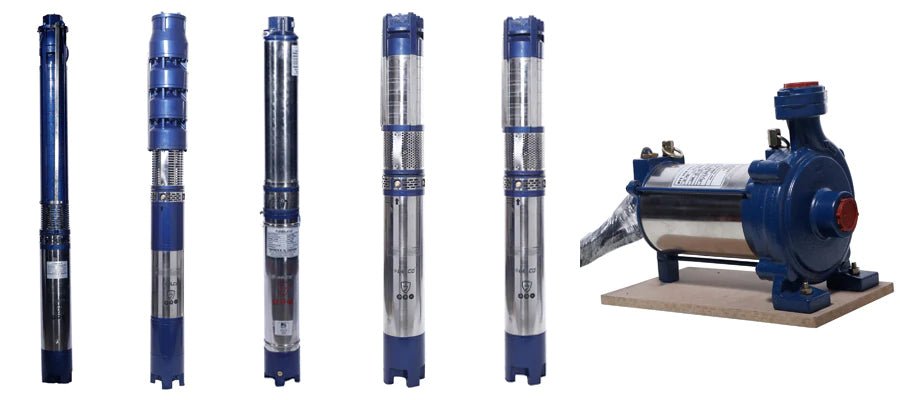Types of Centrifugal Pumps
We discussed Positive Displacement Pumps and Dynamic Pumps in our previous blogs and drew a difference between them. In addition to those, there is a third kind of pump available in the market, the Centrifugal Pump.
What is a Centrifugal Pump?
A Centrifugal pump is used to transport fluids from one source to another. A centrifugal force is used to pump the fluids, using the rule of converting the rotational kinetic energy or the mechanical power to the hydrodynamic energy flowing fluid. The centrifugal pumps are always immersed in water and are operated by electrical energy. Fluid enters the rapidly rotating impellers or rotators, the motion increases the fluid’s velocity and the pressure caused directs it towards the outlet.
They are mostly used for irrigation purposes but can also be ideal for the displacement of harmful and risky liquids in mines and petrochemical industries. They are also ideal for domestic use as they provide 100% efficiency and are a simple cost-effective solution. The less complicated mechanism and design add to its benefit. But one needs to be cautious of the fluid dynamics as any fluid with higher viscosity or ferrous particles can cause disfunction.
Types of Centrifugal Pumps
We have a number of pump types that fall under the category of centrifugal pumps.
- Submersible Pumps: It is installed underwater. A sealed electric motor is attached to it which spins the impeller, which further forces out the fluid through an outlet. It is used to move water and relatively thinner liquids with or without solids depending upon the type of impeller installed.
- Turbine Pumps: Having turbine-like impellers, this is called the turbine pump that makes use of its radially oriented teeth to displace liquids. They are ideal in a situation where the liquid is to be moved to a higher degree such as in the case of an underground reservoir.
- End Suction Centrifugal Pumps: With one impeller and a volute type casing, the pump has suction going out one end and discharge coming out the other. The suction is axial and the discharge is at 90 degrees to the suction. These pumps are not suitable to use when the water source is situated lower than 4 feet from the pump.
- Jet Pumps: The pump displaces the liquid by the motion of a high-speed jet. Steam, air, water, or any other fluid at rapid motion creates a hydraulic lift to lift a large quantity of the fluid with which it mingles.
- Floating Pumps: It is a semi-submersible pump which is designed for dewatering applications. It is connected to a floating object and ideal for flood situations and removing water from basements and low lying areas.















